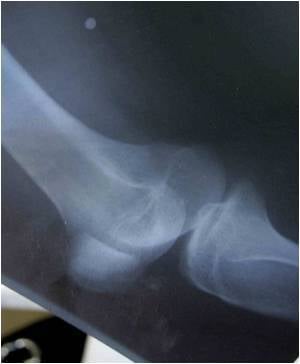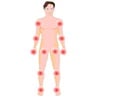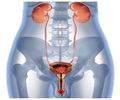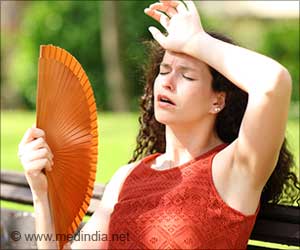Research presented this week at the American College of Rheumatology Annual Scientific Meeting in Atlanta says that the use of special mobility shoes can help ease knee pain

"Forces on the knee joint during walking have been shown to be related to pain, severity and progression of knee osteoarthritis," explains Najia Shakoor, MD; associate professor of medicine at Rush University in Chicago and lead investigator in the study. "Therefore, researchers currently investigate strategies to reduce these forces or loads on the knee joint in hopes of preventing progression of the disease." Dr. Shakoor''s study recently tested these strategies, more specifically, by studying how the use of mobility shoes-flat and flexible shoes, created specifically for this research, that allow natural foot mobility and provide sufficient support for the foot-can affect knee OA.
At the beginning of the study, researchers used a special camera system and a force plate to determine gait (how a person walks) in 16 participants (who were all diagnosed with knee OA through X-rays and based on symptoms) while they walked in their own shoes, in mobility shoes, and barefoot. After this initial evaluation, participants were instructed to wear the mobility shoes a minimum of six hours per day, six days a week for six months. To determine the progression of each participant, researchers performed the same gait analysis that was performed at the beginning of the study at six, 12 and 24 weeks.
Overall, researchers determined that mobility shoes, in comparison to conventional shoes, led to significantly decreased knee loads in the participants. Additionally, they found that longer-term use of the mobility shoes led to even better outcomes in participants - noting a reduction in knee load that increased from 3.7 percent at the beginning of the study to 9.4 percent after six weeks, and to 18 percent at six months. Finally, researchers found that after 24 weeks of wearing mobility shoes, participants experienced an adaptation in their gait (with a knee load reduction of 11 percent) even when wearing conventional shoes - leading researchers to believe that the use of mobility shoes could create beneficial neuromuscular and behavioral changes in how people with OA walk.
"This study showed that specialized footwear was beneficial in reducing knee loads substantially over six months," says Dr. Shakoor. "It is also the first study to show that chronic use of a mechanical, knee-load reducing intervention could lead to favorable alterations in the way participants walk - even once the intervention is removed. "
The American College of Rheumatology is an international professional medical society that represents more than 8,000 rheumatologists and rheumatology health professionals around the world. Its mission is to advance rheumatology. The ACR/ARHP Annual Scientific Meeting is the premier meeting in rheumatology. For more information about the meeting, visit www.rheumatology.org/education. Follow the meeting on twitter by using the official hashtag: #ACR2010.
Advertisement
Learn more about living well with rheumatic disease as well as rheumatologists and the role they play in health care.
Presentation Number: 2099
GAIT ADAPTATION AFTER 6 MONTHS OF SPECIALIZED SHOES IN KNEE OSTEOARTHRITIS
Najia Shakoor, MD (Rush University, Chicago, Ill.)
Roy H. Lidtke, DPM (Rush University, Chicago, Ill.; Des Moines University, Des Moines, Iowa)
Markus A Wimmer, PhD (Rush University, Chicago, Ill.)
Kharma C Foucher, MD, PhD (Rush University, Chicago, Ill.)
Rachel A Mikolaitis, MS (Rush University, Chicago, Ill.)
Louis F Fogg, PhD (Rush University, Chicago, Ill.)
Alan J Shoelson, DPM (Rush University, Chicago, Ill.)
Joel A Block, MD (Rush University, Chicago, Ill.)
Body: Purpose: Biomechanical interventions for knee osteoarthritis (OA) aim to improve pain and retard disease progression by decreasing knee loading. These interventions require chronic use to achieve maximum efficacy and may have a delayed response. Chronic load alterations may also result in neuromuscular gait adaptations that persist even after the intervention is removed. Here, we evaluate the effects of 6 months'' use of a mobility shoe , intended to replicate the advantages of barefoot gait, on knee loading in symptomatic knee OA.
Methods: Subjects with radiographic (KL grades 2) and symptomatic (at least 30mm pain of 100mm scale while walking) medial compartment knee OA were recruited. Baseline gait analyses were performed using an optoelectronic camera system and multi-component force plate in subjects'' own shoes , mobility shoes , and barefoot. Subjects were instructed to wear the mobility shoes at least 6 hours/day for 6 days/week. Gait analysis was then repeated at 6, 12, and 24 weeks. The peak knee adduction moment (PAddM), a validated marker of medial compartment loading, represented the primary endpoint. An intent to treat analysis (ITT) was performed using repeated measures analyses of variance and simple main effects were used to further evaluate differences between shoes at various time points.
Results: Complete data are available for 16 subjects. Three terminated early: two due to lack of efficacy (6 and 12 weeks), and one was unable to return for study visits after 8 weeks. All data were carried forward for the ITT analysis. Mean PAddMs during all footwear conditions are represented over time in Figure 1. Overall, in comparison to conventional shoes, the mobility shoes were associated with significantly decreased loads during gait (p=0.001)(Figure 1). Whereas at baseline the reduction in load with the mobility shoe compared to conventional shoes was only 3.7% (p=0.081), this increased to 9.4% (p<0.001) after 6 weeks of use, and reached an overall reduction of 18% at 6 months compared to conventional shoes at baseline (p<0.001). Interestingly, by 24 weeks, a gait adaptation was evident yielding an 11% (p<0.001) reduction in PAddM from baseline even when tested in conventional shoes (Figure 1).
Discussion: This study suggests that 6 months'' use of mobility shoes results in significant reductions in knee loading in subjects with knee OA. This effect is delayed, taking 6 weeks to achieve significant reductions, and it is associated with a gait adaptation by 24 weeks that maintains load reduction even when the mobility shoes are removed. This gait adaptation, likely resulting from beneficial neuromuscular and behavioral changes, may be especially important in OA, which progresses slowly and for which subtle alterations may have profound long-term consequences. The durability of these adaptations will need to be evaluated in longer term studies.
Disclosure: Najia Shakoor, nothing to disclose; Roy Lidtke, nothing to disclose; Markus Wimmer, nothing to disclose; Kharma Foucher, nothing to disclose; Rachel Mikolaitis, nothing to disclose; Louis Fogg, nothing to disclose; Alan Shoelson, nothing to disclose; Joel Block, nothing to disclose.
Source-Newswise










